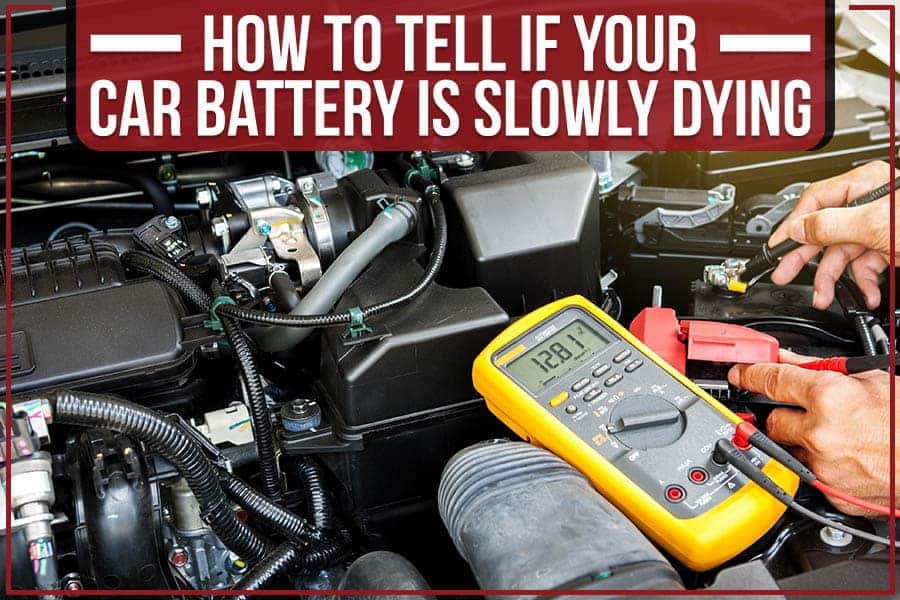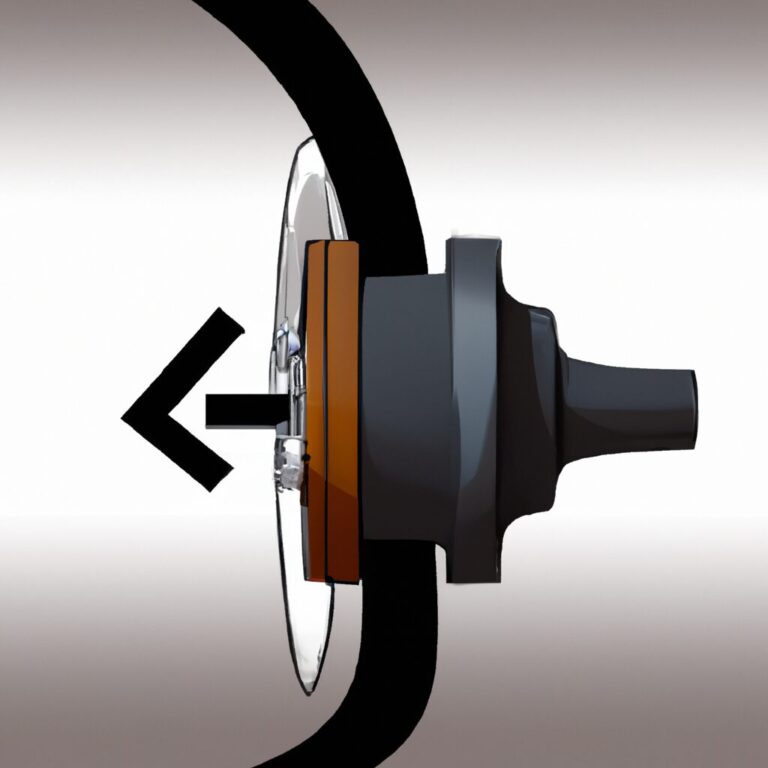How to Tell If a Car Battery is Dying
To tell if a car battery is dying, check for slow engine cranking and dimming lights. These are common signs of a failing battery.
A car battery is a crucial component that starts your vehicle and powers its electrical systems. When a battery starts to lose its charge, it can cause various issues, leading to potential breakdowns. By being aware of the warning signs of a dying battery, you can prevent being stranded on the road and avoid costly repairs.
In this guide, we will explore the symptoms of a failing car battery and provide tips on how to prolong its lifespan. Stay tuned to learn more about maintaining your car’s battery health and ensuring reliable performance on the road.
Signs Of A Dying Car Battery
As a car owner, it is important to be able to identify the signs of a dying car battery. This knowledge will help you avoid unexpected breakdowns and ensure a smooth driving experience. In this article, we will discuss some of the most common indicators that your car battery is nearing the end of its lifespan. By being aware of these signs, you can take necessary action and prevent yourself from getting stranded on the side of the road.
When you start your car, pay close attention to the brightness of your headlights and interior lights. If you notice that they are significantly dimmer than usual, it could be a sign of a dying car battery. This is because the battery is not able to provide enough power to sustain the lights at their normal intensity. Dimming lights are usually noticeable when you turn on other electrical accessories, such as the radio or air conditioning, as they put additional strain on the battery.
An easy way to check if your lights are dimming is to turn on your high beams and observe their brightness. If they appear weaker than usual, it is a clear indication that your car battery is losing its charge.
Another sign of a dying car battery is a slow cranking engine when starting your vehicle. When you turn the key in the ignition, if you hear a sluggish cranking sound or the engine takes longer to turn over, it is likely due to a weak battery. A healthy battery provides the necessary electrical power to start the engine smoothly and quickly. However, as the battery wears out, it loses its capacity to deliver the required power and results in a slower cranking speed.
If you experience a slow cranking engine, it is important not to ignore this warning sign. Ignoring it can lead to complete battery failure, leaving you stranded and in need of a jump-start or replacement.
Being aware of these signs of a dying car battery can help you take proactive measures and avoid the inconvenience and potential hazards of a dead battery. If you notice any of these signs, it is recommended to have your battery tested or replaced by a qualified mechanic to ensure your vehicle continues to run smoothly.

Credit: www.tireoutlet.com
Testing The Car Battery
There are a few methods you can use to determine if your car battery is on the decline. Testing the car battery is essential to avoid getting stranded unexpectedly. Here are two effective ways to check the health of your car battery:
Using A Multimeter
A multimeter is a handy tool that can help you gauge the voltage output of your car battery. By using a multimeter, you can quickly assess if your battery is holding a charge or if it’s losing its power capacity. Here’s how you can perform this test:
- Set your multimeter to the DC voltage setting.
- Connect the red probe to the positive terminal of the battery.
- Connect the black probe to the negative terminal of the battery.
- Read the voltage displayed on the multimeter.
- A healthy battery should typically read around 12.6 volts or higher.
Visually Inspecting The Battery
Another way to assess the condition of your car battery is through a visual inspection. Visually inspecting the battery can reveal signs of corrosion, leaks, or other physical damage that may indicate a dying battery. Here’s what you should look for:
- Check for any visible corrosion on the battery terminals.
- Inspect the battery case for cracks or bulges.
- Look for any signs of leaks or fluid seepage around the battery.
- Ensure the battery connections are tight and secure.
Preventive Measures
Regular Battery Maintenance
Perform regular checks to avoid unexpected battery failure.
- Check battery terminals for corrosion regularly.
- Ensure secure connections to prevent disruptions.
- Regularly test the battery voltage to detect early issues.
Avoiding Short Trips
Avoid frequent short trips to maintain battery health.
- Consolidate errands to reduce short journeys.
- Opt for longer drives periodically to recharge the battery.

Credit: m.youtube.com
Dealing With A Dying Battery
If you’ve ever experienced the frustration of a car battery that’s on its last legs, you know just how important it is to be able to identify the signs of a dying battery. Ignoring these signs can leave you stranded on the side of the road, waiting for a tow truck to come to your rescue. In this article, we’ll explore the common indicators of a dying car battery and provide you with easy-to-follow steps on how to deal with this problem.
Jump-starting The Vehicle
When your car refuses to start and you suspect a weak battery, jump-starting the vehicle is a common solution that can save the day. Here are the steps you should follow:
- Identify a reliable source of power, such as a functional car with a good battery or a portable power pack.
- Position both vehicles close but not touching. Ensure that both engines are turned off before connecting any cables.
- Using a pair of jumper cables, connect the positive (+) terminal of the good battery to the positive terminal of the dead battery.
- Connect the negative (-) terminal of the good battery to a metal part of the engine block on the dead battery vehicle.
- Start the engine of the functional car and let it run for a few minutes.
- Attempt to start your vehicle. If it starts successfully, leave the engine running for at least 20 minutes to allow the alternator to recharge the battery.
- Remove the jumper cables in reverse order, starting with the negative (-) terminal and ending with the positive (+) terminal.
Replacing The Battery
If jump-starting your vehicle doesn’t solve the problem or if you’ve had to jump-start it multiple times in a short period, it’s likely that your battery needs to be replaced. Follow these steps to replace your old battery:
- Consult your vehicle’s manual to determine the correct type and size of battery for your car.
- Ensure that the engine is turned off and the vehicle is in park. Open the hood and locate the battery.
- Use a wrench to disconnect the negative (-) terminal followed by the positive (+) terminal of the old battery.
- Loosen and remove the clamping mechanism that holds the battery in place, then carefully lift out the old battery.
- Place the new battery into the battery tray, making sure it is secure and properly aligned.
- Connect the positive (+) terminal of the new battery followed by the negative (-) terminal. Tighten the connections with a wrench.
- Double-check all connections and ensure that the battery is securely fastened in the tray.
- Close the hood and start the engine to ensure that the new battery is functioning properly.
By following these simple steps, you’ll be well-prepared to deal with a dying car battery. Regularly checking your battery’s health and taking prompt action when necessary will help you avoid the inconvenience and frustration of being stuck with a dead battery. Don’t let a dying battery spoil your day; take charge and stay on the move!
Professional Assistance
When it comes to car battery issues, sometimes seeking professional assistance is the best course of action. Expert advice and a thorough battery inspection can help diagnose and address the problem effectively.
Seeking Expert Advice
- Reach out to a certified mechanic or an auto service center for professional guidance.
- Consult professionals who specialize in car electrical systems for accurate assessment.
- Expert advice can provide clarity on whether the battery is dying or if there are other underlying issues.
Getting A Battery Inspection
- Schedule a professional inspection to assess the overall health of the battery.
- Technicians can utilize specialized tools to measure the battery’s voltage and performance.
- An inspection can determine if the battery is the root cause of the vehicle’s problems.

Credit: www.jackhananiabuickgmc.com
Frequently Asked Questions For How To Tell If A Car Battery Is Dying
How Do I Know If My Car Battery Needs Replacing?
You can check if your car battery needs replacing by observing slow engine cranking, dim headlights, or a battery warning light. Regular battery testing can also indicate its health. If you notice these signs, it’s advisable to seek professional assistance to confirm the need for a replacement.
What Are Signs Your Car Battery Is Dying?
The signs of a dying car battery include difficulty starting the engine, dimming headlights, electrical issues, and a low battery warning.
How Do I Check If My Car Battery Is Ok?
To check your car battery, use a multimeter to measure voltage or perform a load test. Look for corrosion or a bad smell as well.
How Do You Test A Dying Car Battery?
To test a dying car battery, use a digital multimeter to check voltage levels. A healthy battery should show around 12. 6 volts. If it reads below 12. 2 volts, it may need replacement.
What Are The Signs Of A Dying Car Battery?
Signs include slow cranking, dashboard warning lights, and a rotten egg smell.
How Long Does A Car Battery Last On Average?
Car batteries typically last 3-5 years, but extreme temperatures can affect lifespan.
Can A Car Battery Die Suddenly Without Warning?
Yes, a failing battery can suddenly die due to internal cell damage or electrical issues.
Conclusion
To sum it up, keeping an eye out for common signs of a dying car battery can save you from experiencing unexpected breakdowns and headaches. Remember to pay attention to slow engine cranking, dimming headlights, unusual electrical issues, and the age of the battery itself.
Regular battery maintenance and inspection will help keep your vehicle running smoothly and ensure you’re not left stranded on the side of the road. So, don’t ignore the warning signs and trust your intuition when it comes to your car’s battery health.




